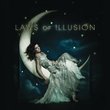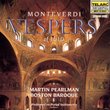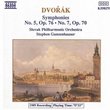| All Artists: Berlioz, Bernstein, Nyp Title: Requiem Members Wishing: 0 Total Copies: 0 Label: Sony Original Release Date: 1/1/1992 Re-Release Date: 7/28/1992 Genres: Pop, Classical Styles: Vocal Pop, Opera & Classical Vocal, Historical Periods, Early Music Number of Discs: 2 SwapaCD Credits: 2 UPC: 074644752625 |
Search - Berlioz, Bernstein, Nyp :: Requiem
 | Berlioz, Bernstein, Nyp Requiem Genres: Pop, Classical
Berlioz' Requiem needs a performance of spontaneous brilliance and almost manic intensity to come off. The reason is simple. The big movements--the Dies Irae sequence and Lachrymosa--use a huge chorus and a full orchestra ... more » |
Larger Image |
CD DetailsSynopsis
Amazon.com essential recording Berlioz' Requiem needs a performance of spontaneous brilliance and almost manic intensity to come off. The reason is simple. The big movements--the Dies Irae sequence and Lachrymosa--use a huge chorus and a full orchestra including four brass bands (stationed in the four corners of the concert hall), eight sets of timpani (10 players), and additional percussion. After that, everything else sounds anti-climatic, unless the conductor somehow manages to keep the tension flowing through the quiet (and, let's not kid ourselves, dull) bits. Leonard Bernstein certainly manages the impossible, though God only knows how he does it. The recording helps--it really captures a sense of large forces in a big space, while projecting the aura of mystery that the intimate moments need if they're going to work. --David Hurwitz Similarly Requested CDs
|
CD ReviewsBrilliant performance 06/19/2001 (5 out of 5 stars) "Berlioz's Requiem is one of the most thrilling pieces of choral music ever written. The sheer power of orchestral and vocal might is evident throughout along with other moments of wonderful beauty and contemplative music.Berstein is on top form and manages to extract a simply awe-inspiring performance from all involved. The Dies Irae on this recording almost threw me from my seat when I first heard it! However, the entire performance is thrilling and the orchestra and singers are suberb. Berlioz is a much neglected composer and yet was one of the most imaginative and brilliant musicians ever. This recording really does this mighty work justice. Also on these dics are highlights of Romeo et Juliette and La Mort de Cleopatre. The Romeo et Juliette highlights are good, but not as good as the brilliant Colin Davis version. I find that Berstein rushes through the Love Scene far too quickly, whereas Davis takes his time and brings out the great beauty. The Mort de Cleopatre, however is excellent. Jennie Tourel is very good as Cleopatre and Berstein's conducting complements her beautifully.Take advantage of these brilliant performances, they offer much to delight." Berlioz: Requiem (and more...) Mr Bassil A MARDELLI | Riad El-SOLH , Beirut Lebanon | 04/11/2008 (5 out of 5 stars) "I love Leonard Bernstein's interpretation of this tender music composed by Berlioz.
All movements are romantic of exciting and mysterious qualities relating to heroic times of the mid 19th century that celebrated nature rather than civilization. Here one can touch the spirit of imagination over rationality - during a period in which the industrial revolution was still in its infancy. Louis Hector Berlioz (b.1803, d.1869) the French Romantic composer, was widely acknowledged for his works of `'Symphonie fantastique'' and `'Grande Messe des morts (Requiem), Berlioz played a major part in the modern orchestra with his writings on Instrumentation and by his application of huge orchestral forces for his music, sometimes reaching 1,000 performers. In 1837, Berlioz composed the `'Grande Messe des morts, Op. 5 `''and this was perhaps the decade that witnessed the most popular music such as `'La Mort de Cleopatra'' and `'Romeo et Juliette'' - certain notable excerpts are produced in this recording. But the major theme here is The Grande Messe des Morts, one of Berlioz's best-known crops, with an enormous orchestration of woodwind and brass instruments. Bernstein is very good at it and must have called to mind past personal tragedies. This Requiem must have given him a subject to exercise an irresistible fascination on him. In these last Agnus Dei (conclusion) he merely voices the general sentiment of his countrymen - his kin's -that had come out of the war in the 20th century cheated of their spoils and sadly impoverished. In 1837, France's Minister of Interior Monsieur de Gasparin commissioned Berlioz to produce a Requiem Mass to commemorate soldiers who died in the July 1830 Revolution. Berlioz, of course, consented because he wanted to compose a large orchestral work and realized how much support he would be getting from a French Official of that importance. Berlioz proceeded with unwonted, (out of the ordinary) smoothness, the orchestra, as he always wished, was growing in size and quality, and the use of woodwinds and brass was expanding due to the increasing ease of intonation given by modern instrumentations. Berlioz later wrote, "if I were threatened with the destruction of the whole of my works save one, I should crave mercy for the Messe des morts." My references tell me this: """"The premiere was conducted by François-Antoine Habeneck in 1837. According to Berlioz himself, Habeneck put down his baton during the dramatic Tuba mirum (part of the Dies Irae movement), and took a pinch of snuff. Berlioz rushed to the podium to conduct himself, saving the performance from disaster. The premiere was a complete success."""" Berlioz revised his composition at least two times in his life, the first in 1852, and the final revisions were introduced in 1867,- two years before his death. " |

 Track Listings (10) - Disc #1
Track Listings (10) - Disc #1








